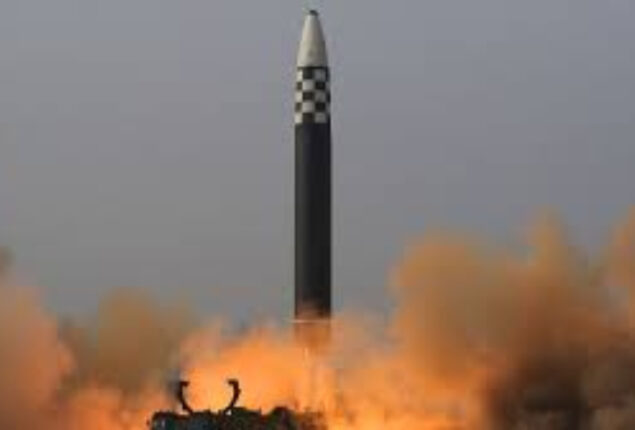US accuses North Korea of hiding weapons supplies to Russia
North Korea supplying Russia with artillery shells for use in Ukraine war,...

North Korea fires most missiles in a day, South responds
In a clear escalation of hostilities, North and South Korea have launched numerous missiles into the oceans close to one another’s coasts.
At least 23 missiles were fired by the North in a single day, including one that came down less than 60 kilometers (37 miles) from the city of Sokcho in the South.
Warplanes from Seoul fired three air-to-ground missiles in retaliation over the disputed maritime demarcation line.
Later, Pyongyang launched 100 artillery shells and another six missiles.
The North claims that the missile launches are in retaliation for the extensive military drills that South Korea and the US are now conducting, which it describes as “aggressive and provocative.”
In what was interpreted as a subliminal threat to deploy nuclear weapons, Pyongyang threatened on Tuesday that they would pay “the most horrific price in history” if they maintained their joint military exercises. As tensions have increased, the North has conducted a record number of missile tests this year.
Pyongyang has conducted six nuclear tests between 2006 and 2017 and is rumored to be contemplating a seventh despite punishing sanctions. In defiance of UN Security Council resolutions, it has kept developing its military capacity, threatening its neighbors and perhaps even putting the US mainland within striking distance.
The skirmishes on Wednesday started with Pyongyang firing missiles into waters near South Korea, setting off air raid sirens on Ulleung, an island governed by Seoul. Residents were instructed to leave the area and seek refuge underground.
The Northern Limit Line (NLL), a contentious maritime border between the two Koreas, was crossed by one ballistic missile.
The closest a North Korean missile has ever come, even though it fell outside South Korea’s territorial waters.
It was a “unacceptable” invasion of its land, according to Seoul.
According to South officials, air-to-ground missiles fired by their troops near the North’s shore landed a comparable distance past the NLL.
The mass crush in Seoul over the weekend that left more than 150 people dead has brought attention to South Korea at a time of national grief, which coincides with the tit-for-tat launches.
At first, South Korean military sources claimed the missile fired by the North across the NLL was one of at least 10 launched on Wednesday morning in both east and west directions.
Later, they upped the North’s total for the day to 23 launches, including six surface-to-air missiles and seven short-range ballistic missiles.
The missile that fell closest to South Korea was fired before 9:00 (00:00 GMT), and it was around 167 kilometers north-west of Ulleung island, 26 kilometers east of the coastal town of Sokcho, and 57 kilometers south of the de facto boundary.
The missile was instantly picked up by South Korean and Japanese authorities, who strongly denounced Pyongyang’s aggression.
According to South Korea’s military, a ballistic missile “landed south of the NLL near our territorial waters” for the first time since the Korean Peninsula was divided following the 1950–1953 Korean War.
Although the missile landed in South Korean national seas, President Yoon Suk-yeol, who has made it a policy to take a severe stance against North Korea, called it a “effective territorial invasion” and promised a “quick and firm response.”
According to international law, a country can only formally claim a territory that extends 12 nautical miles offshore.
The peninsula has already seen more than 50 missile launches from North Korea in 2022, including one ballistic missile that sailed over Japan, and tensions have been growing.
A US nuclear-powered submarine made its way to the South Korean coast on Monday to take part in the most recent of a series of joint US-South Korean drills that started in August.
These “Vigilant Storm” drills, which involve hundreds of military aircraft from both Seoul and Washington, are the biggest ever.
Catch all the World News, Breaking News Event and Latest News Updates on The BOL News
Download The BOL News App to get the Daily News Update & Follow us on Google News.